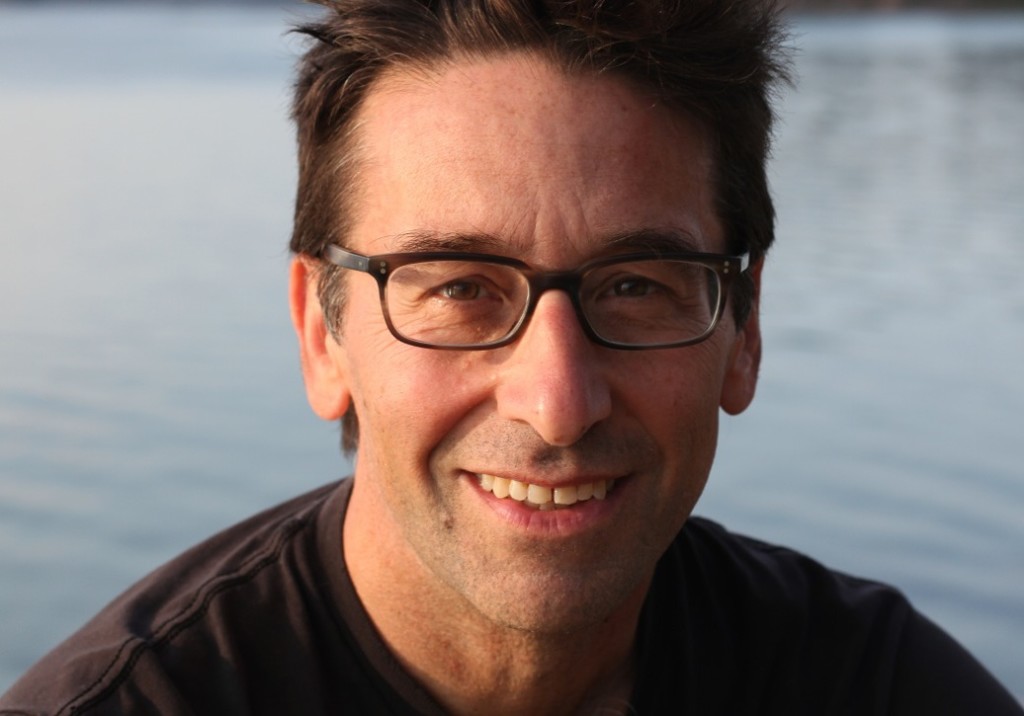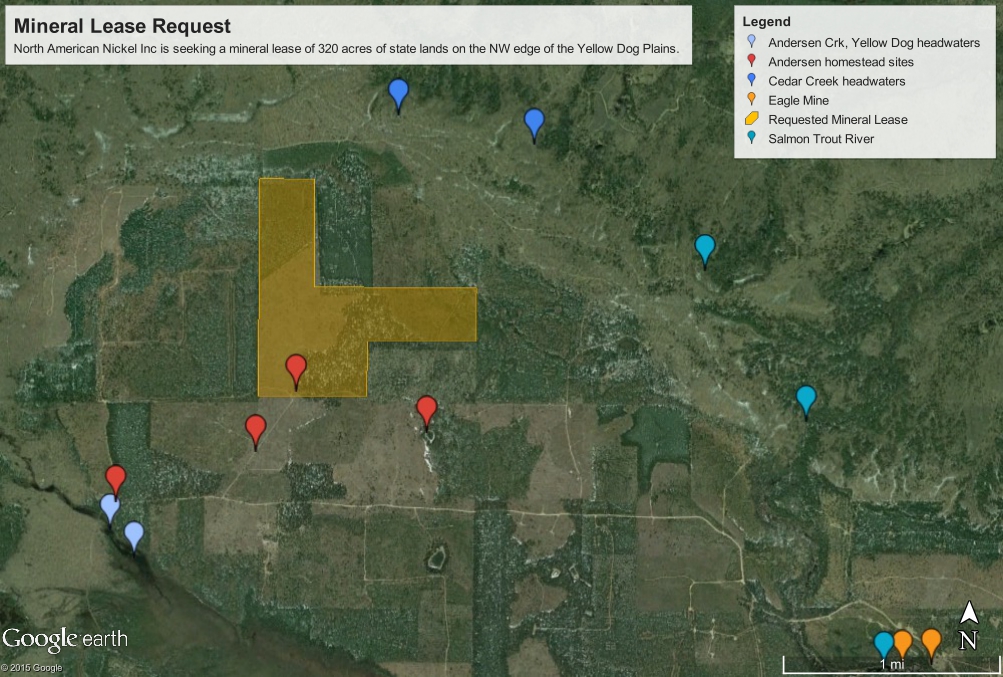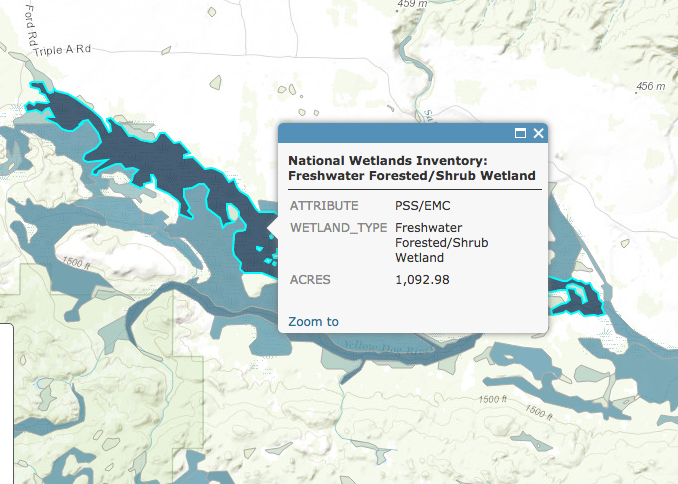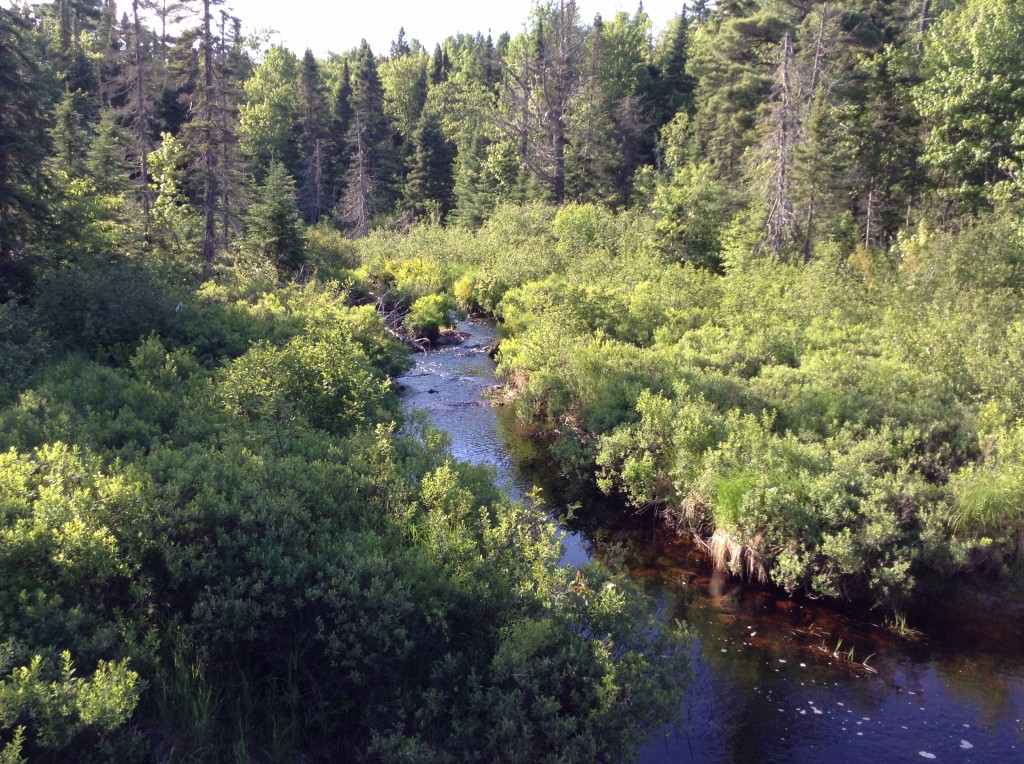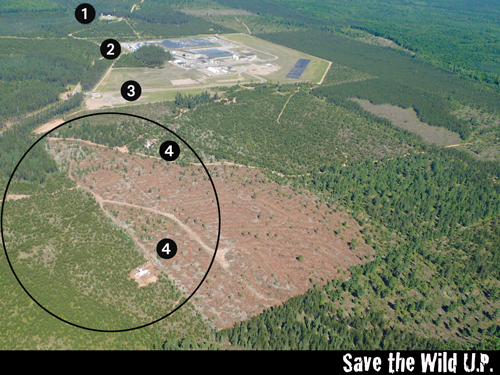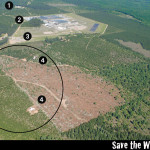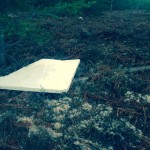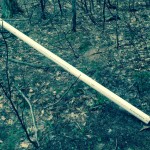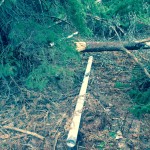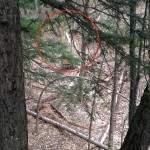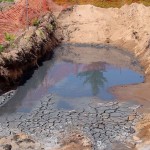FOR IMMEDIATE RELEASE
Proposed NPDES Permit Raises Alarming Wetland Implications
MARQUETTE —Grassroots environmental group Save the Wild U.P., reviewing the most recent permit modification request from Eagle Mine, has uncovered several changes with alarming wetland implications.
Earlier this year, there was an exhaustive permit review process for a draft of the same NPDES permit, which authorizes Eagle Mine LLC – Humboldt Mill’s industrial wastewater discharges. At a well-attended Michigan Department of Environmental Quality (MDEQ) public hearing in January, concerned citizens raised serious and substantial objections concerning the addition of a second wastewater discharge point, “Outfall 002,” and expressed outrage over a new pipeline which pumps wastewater a half mile from the Humboldt tailings pit, to the edge of the Escanaba River. MDEQ approved the permit three months ago. On July 2, MDEQ announced it was proposing to the modify permit — again.
If approved, the newest permit modification will authorize the creation of “Outfall 003,” a third pipe from which the mill’s “treated and untreated” industrial wastewater discharges pour into the environment. According to a statement on the MDEQ website, the permit revision comes “in response to citizen concerns.”
“That’s ridiculous,” says Kathleen Heideman, SWUP president. “Citizens remain deeply critical of the MDEQ’s previous permitting decision, allowing degradation of the Middle Branch of the Escanaba River. We asked EPA Region 5 to veto that NPDES permit, in fact, because it was so deeply flawed. Now they’re already revising it. Adding a third discharge point does not address citizen concerns about environmental degradation. The pollution remains unchanged. MDEQ is supposed to be protecting the Middle Branch of the Escanaba River as a coldwater trout stream.”
The MDEQ’s public notice announcement states, “The only change to the permit is to add another outfall location, 530 feet west of their original outfall. Both outfalls discharge to the same wetland.”
The statement is misleadingly oversimplified. While Outfall 003 would be only 530 feet west of Outfall 001, the route taken by the wastewater will be strikingly different. “Wastewater discharged from Outfall 003 would enter the Middle Branch of the Escanaba River at a location at least a mile upstream from Outfall 001. In short, Eagle Mine’s total environmental footprint is expanding again,” says Alexandra Maxwell, SWUP’s interim director.
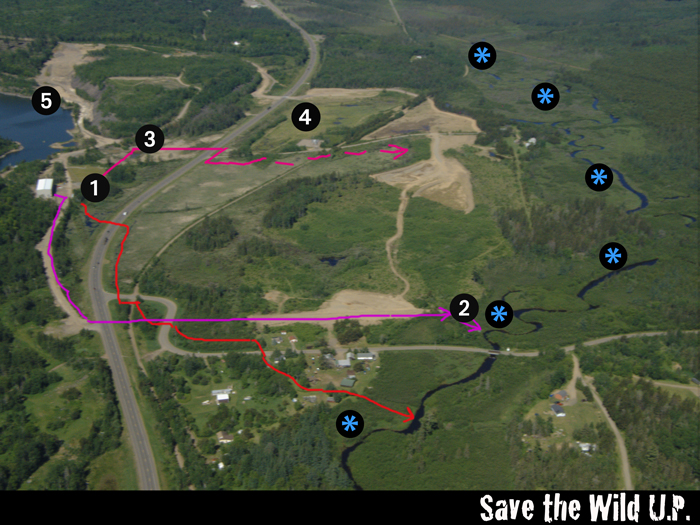
1 = Outfall 001
2 = Outfall 002
3 = (proposed) Outfall 003
4 = Humboldt Wetland Mitigation Bank
5 = Humboldt Tailings Disposal Facility (pit)
(*) = asterisks indicate Middle Branch of the Escanaba River.
Note: according to the MDEQ’s Steve Casey, “the dominant flow path has historically been along US-41 to Wolf Lake Road” via culverts and ditches (red line), but recent culvert changes in this area have removed impediments to flow, enabling the proposed (pink) flow path.
“Calamitous violations of clean air and water catch our attention, but the more common damage wrought by a thousand small cuts becomes routine and acceptable. That’s the modern way of doing ourselves in: slowly, progressively, inattentively,” says Jon Saari, SWUP’s vice president.
The path of the wastewater raises the most troubling aspects of the proposed permit. The addition of Outfall 003 would divert a portion of the mill’s wastewater to a new location. It will be dumped into a poor-quality cattail wetland adjacent to the Humboldt Pit, a site already polluted by historic mine tailings discharge. From there, the wastewater will flow north, passing underneath US-41 through a culvert before entering the Humboldt Wetland Mitigation Bank property, en route to the Escanaba river.
“Wetland mitigation banks are supposed to replace functional wetlands destroyed by development. Owners of such banks are given credit for restoring functional wetlands. I find it incredible that this mitigation bank will be allowed to receive wastewater from the Humboldt Mill,” says Gail Griffith, emeritus professor of Chemistry at Northern Michigan University and SWUP board member.
“This whole thing is highly unusual. I spoke to a staffer from Michigan’s Tip of the Mitt Watershed Council, someone familiar with NPDES permitting requirements and regulations concerning wetlands preservation, and they could not think of another situation in which a wetland mitigation bank would be allowed to intentionally receive wastewater discharges from a mine’s tailings facility,” says Heideman.
The Humboldt Wetland Mitigation Bank, registered with the State of Michigan, and owned by local aggregate company A. Lindberg and Sons, has the stated goals of “Water Quality Improvement, Flood Storage, and Wildlife Habitat.” “It seems like this permit modification is being done for the benefit of channeling Eagle Mine’s wastewater into Lindberg’s wetland mitigation bank. According to the permit files, Lindberg is also the contractor designing and constructing this outfall. Isn’t that a conflict of interest on several levels?” asks Maxwell.
“Obviously, we have real concerns about the current and future biological integrity of this wetland mitigation bank. Comparing the Eagle Mine’s water balance diagrams, it’s clear that the underlying hydrology was misinterpreted. Previously, this area received groundwater that escaped through the unconsolidated north wall of the Humboldt Pit. After Eagle Mine reinforced the pit wall with a bentonite dam, the hydrology changed. Now the wetland mitigation bank needs water, so Eagle is proposing to intentionally divert some industrial wastewater in their direction? The proposed discharge plan is illogical at best — illegal at worst,” says Heideman.
Under Michigan law, R 281.954, Rule 4, “(1) A mitigation bank is a site where wetlands are restored, created, or, in exceptional circumstances, preserved expressly for the purpose of providing compensatory mitigation in advance of the unavoidable loss of wetlands authorized by the act. A mitigation bank shall be maintained in perpetuity. (2) The objective of mitigation banking is to provide for the replacement of chemical, physical, and biological wetland functions (….) Single function, low quality wetlands, such as wastewater ponds, will not qualify as mitigation sites.”
MDEQ, in issuing the current NPDES permit, granted Eagle Mine an exemption to the Clean Water Act’s critical antidegradation policy, based on the mine’s claim that water quality degradation in the Escanaba River watershed is necessary to accommodate “economic and social benefits” in the area — a claim debated by many local residents, environmentalists, and the Keweenaw Bay Indian Community, which views degradation of the watershed as a threat to treaty-protected resources.
“Humboldt Mill’s NPDES permit authorizes discharges that will, in the short term, degrade water quality in the Escanaba watershed. But it would be manifestly unreasonable, and clearly contrary to Michigan law, for the MDEQ to allow these industrial wastewaters to enter a state-registered wetland mitigation bank,” says Marquette attorney Jana Mathieu.
“Mitigation banks are required to be protected from contaminants, reviewed for biological integrity, and maintained in perpetuity. Anything less would be contrary to the administrative code which governs wetland mitigation banking,” according to Heideman.
“I can’t believe the laws (regulating wetland mitigation banks) intended for the landowner to dig out sand and gravel for commercial sale, let the hole fill with water, including contaminated water seeping from an old tailings basin, and wastewater discharges from the processing of copper-nickel-sulfide ore at Humboldt Mill, let whatever aggressive, weedy invasive plants that are around move in, put up “no trespassing” signs and call it wetland mitigation. Is anybody monitoring this? Something’s gotta be wrong,” says Steve Garske, botanist and SWUP board member.
Save the Wild U.P. requested a site visit to review the Humboldt Wetland Mitigation Bank, but has received no response from the bank’s sponsor, A. Lindberg and Sons; MDEQ’s Water Resources Division declined to facilitate the site visit.
No public hearing has been scheduled. SWUP encourages concerned citizens to submit written comments, or request a public hearing for further review of this proposed permit modification and related environmental impacts. “Mine permitting keeps getting streamlined for the benefit of industry, while concerned citizens find the process time-consuming and opaque. Before the ink is dry on a permit, it is being revised, with additional loopholes and leniencies inserted. It is up to concerned citizens to follow every revision, ask questions, and loudly demand that due process be followed,” says Maxwell.
Public comment is due by August 3, 2015. Written comments should be submitted to the MDEQ’s Samuel Snow, by email: snows2@michigan.gov or by mail to: Samuel Snow, Permits Section, Water Resources Division, Department of Environmental Quality, P.O. Box 30458, Lansing, Michigan 48909.
Founded in 2004, Save the Wild U.P. is a grassroots environmental organization dedicated to preserving the Upper Peninsula of Michigan’s unique cultural and environmental resources. For more information contact info@savethewildup.org or call (906) 662-9987. Get involved with SWUP’s work at savethewildup.org or follow SWUP on Facebook at facebook.com/savethewildup or Twitter @savethewildup.
Editors: the following photos are available for use with this press release.
Aerial photograph showing the location of Humboldt Mill’s tailings pit, discharge points, and environmental footprint. Sizes available: 700 px wide or original, 4608 px wide.
Suggested Caption:
1 = Outfall 001; 2 = Outfall 002; 3 = (proposed) Outfall 003; 4 = Humboldt Wetland Mitigation Bank; 5 = Humboldt Tailings Disposal Facility (pit); (*) = asterisks indicate Middle Branch of the Escanaba River. Note: according to the MDEQ’s Steve Casey, “the dominant flow path has historically been along US-41 to Wolf Lake Road” via culverts and ditches (red line), but recent culvert changes in this area have removed impediments to flow, enabling the proposed (pink) flow path.
